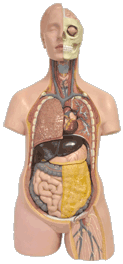At WiseGEEK, we're committed to delivering accurate, trustworthy information. Our expert-authored content is rigorously fact-checked and sourced from credible authorities. Discover how we uphold the highest standards in providing you with reliable knowledge.
What Is Radical Polymerization?
The word polymer means "many units," and refers to a chemical process of adding one unit to another, to another — and so on — until a chain of the desired size has been produced. Some polymerization reactions employ positively charged carbon ions, or carbocations; while others employ negatively charged carbon atoms, or carbanions. Yet a third mechanism accomplishes the task using free radicals, and the process is called radical polymerization. Free radicals are atoms or molecular fragments with a reactive unpaired electron that may be used to increase the size of a smaller molecule. An "initiator" is required to begin the reaction in free radical polymerization.
Generally, the initiator is a molecule possessing a weak chemical bond that splits evenly into radicals, each fragment taking away a single electron, rather than one fragment receiving both electrons and the other, none. Chlorine gas (Cl2) exposed to ultraviolet light splits into two radicals, each notated as Cl∙, with a dot representing the lone electron. When this reactive radical unites with an electrically neutral organic molecule, the result is a larger radical that can react further, and so on. Additional common initiators include organic peroxides — with an –(O–O)– bond — and azo-compounds — compounds having an –(N=N)– bond.

Once the reaction is initiated, propagation of the reaction continues, with the number of free radicals remaining essentially constant. One example of this can be seen in the radical polymerization of ethylene gas using an organic peroxide initiator, R–O–O–R. A small amount of peroxide is split into its component radicals (R–O∙) and fed into ethylene gas (CH2=CH2). The two react, resulting in addition and the presence of a new species (R–O–CH2–CH2∙). This is itself reactive, and attacks a second ethylene gas molecule to produce still another, larger species (R–O–CH2–CH2CH2–CH2∙); eventually, the reaction is halted.
Although the radical polymerization reaction is stopped at a convenient point, there are natural processes that decrease the number of available free radical reaction participants before that point is reached. One of these is called "combination," the unintended joining of free radicals. In the cited example, 2 R–O–CH2–CH2∙ → R–O–CH2–CH2–CH2–CH2–O–R. Another side reaction is "disproportionation," in which one radical snatches a hydrogen atom from another radical, as in R–O–CH2–CH2∙ + ∙CH2–CH2–O–R → R–O–CH2CH3 + CH2=CH–O–R. The resultant polymer, polyethylene, can be written –(CH2–CH2)n–. Since not all of the product chains in the radical polymerization process will be of equal length at the time of reaction termination, molecular weight may be given as an average molecular weight or as some form of molecular weight distribution.
AS FEATURED ON:
AS FEATURED ON:










Discuss this Article
Post your comments